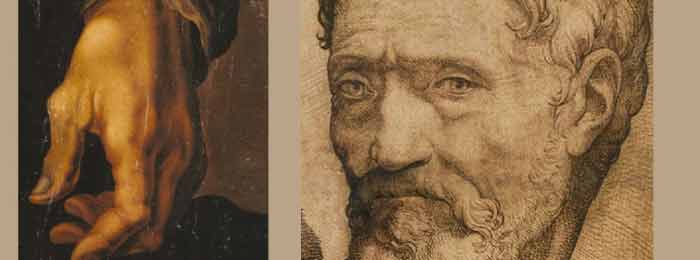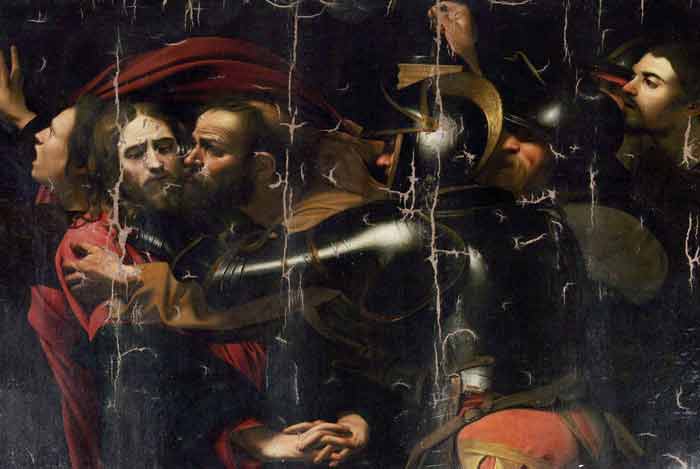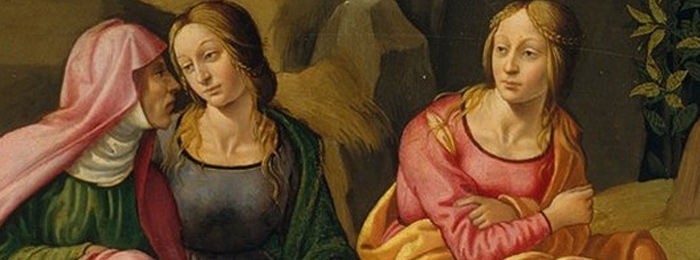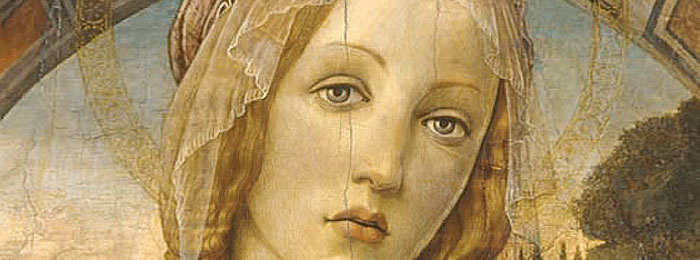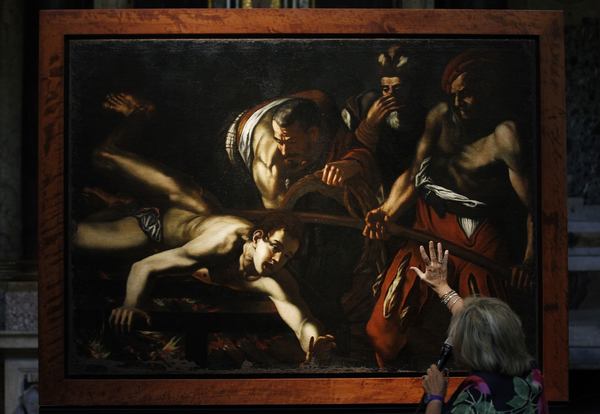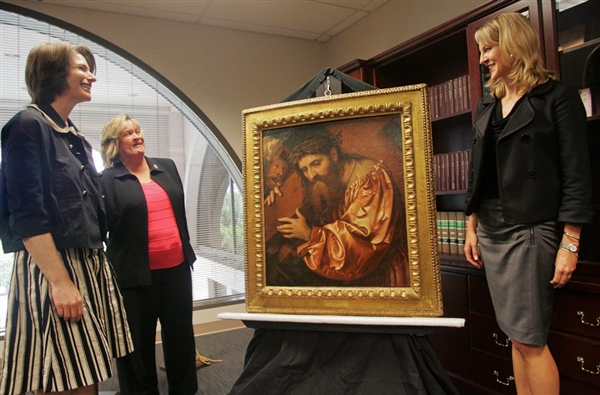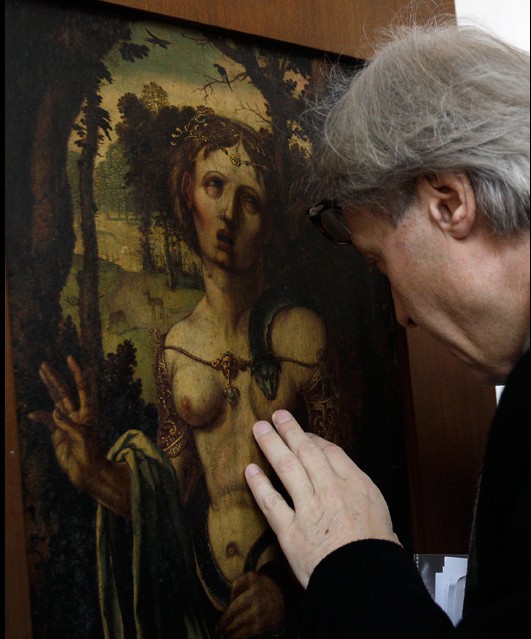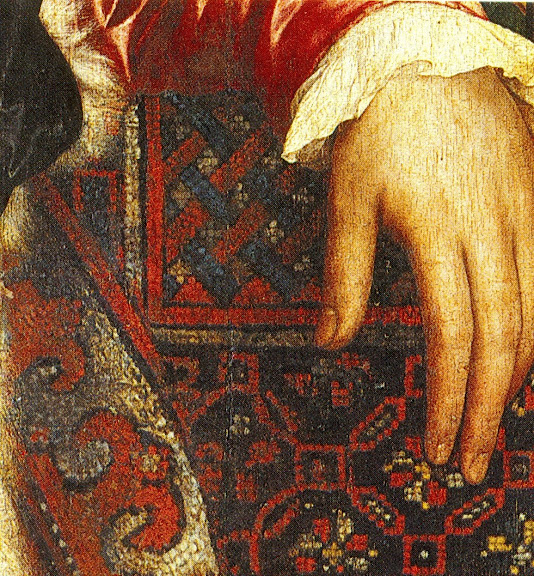On 7 Feb, 2016 With
… Letters written by the artist suggest his hand symptoms appeared late in life.
According to a letter written to his nephew in 1552, they caused him great discomfort.
Nevertheless he continued to create one masterpiece after another and was seen hammering only a few days before his death in 1564, three weeks before his 89th birthday.
By then, he was unable to write, and could only sign his letters. …
Read More
On 3 Jan, 2016 With
Stolen Caravaggio Painting Barely reported here in the U.S., a version of Caravaggio’s 17th century masterpiece, the Taking of Christ (Judas’ Kiss) was stolen from the Museum of Western and Eastern Art in Odessa, Ukraine and has been recently uncovered at a Moscow online auction. The dramatic painting dating back to 1602 by the Italian Baroque master, Michelangelo Merisi da Caravaggio, depicts Judas embracing Our Lord and betraying Him with a kiss in the Garden of Gethsemane, a very apropos theme as we commemorate these events during this most Holy Week. The National Gallery of Art has a greatanalysis of this painting, for those who are interested in learning more about it. Reuters reported that the thieves “entered through a…
Read More
On 11 Aug, 2015 With
Rediscovered painting of Michelangelo by Milton Esterow A painting in the Metropolitan long attributed to the circle of Francesco Granacci is really by Michelangelo— according to experts who cite underdrawings, imagery, and aspects of the artist’s own biography as clues. “I’m acutely aware that Michelangelo, like van Gogh, attracts a lot of crazy ideas, and people are going to say, ‘This is another absurd idea,’” said Everett Fahy, one of the world’s most distinguished scholars of the Italian Renaissance, who retired in March as John Pope-Hennessy Chairman of European Paintings at the Metropolitan Museum of Art. “I’m expecting that they’re going to throw brickbats.” The brickbats may come from scholars who disagree with Fahy when he asserts that Saint John…
Read More
On 5 Aug, 2015 With
Italian Renaissance portrait was unmask as a remarkably sophisticated 20th-century forgery. Sometimes we see what we want to see. When this Italian ‘Renaissance’ portrait was acquired by the National Gallery in 1923, it was hailed as a unique painting by an undiscovered master of the 15th century. Since the 1950s, connoisseurship, art historical research and scientific analysis have combined forces to unmask a remarkably sophisticated 20th-century forgery. This portrait was acquired by the National Gallery in 1923 as a painting of the late 15th century, possibly by an accomplished but unknown artist in the circle of Melozzo da Forli (1438?1494), an artist primarily active in Urbino and Rome. The armorial badge stamped into the gesso at upper right suggested the…
Read More
On 24 Jun, 2015 With
Article by Nicole Winfield The Vatican’s top art historian has shot down a report in its own newspaper that suggested a recently discovered painting was a Caravaggio. The head of the Vatican Museums, Antonio Paolucci, wrote in the Vatican newspaper L’Osservatore Romano that the work was most likely a copy of an original by a Caravaggio-influenced artist. L’Osservatore set the art world aflutter last week with a front-page article headlined A New Caravaggio detailing the artistry behind the Martyrdom of St. Lawrence, which had been discovered in the sacristy of a Jesuit church in Rome. The author of the article, art historian Lydia Salviucci Insolera, had made clear that she was not making any conclusions about the authenticity of the…
Read More
On 16 May, 2012 With
The work in question is a 1538 painting by Girolamo de Romani, also known as Romanino, depicting an image of Jesus Christ in an unusual copper-colored robe, carrying the cross on his right shoulder while being dragged by a soldier. It was held in private collections by European families until 1914, when Gentili purchased it. When the Nazis marched into France, many of Gentili’s heirs fled — but weren’t able to take the family patriarch’s art collection and many other valuables. Vichy French authorities auctioned off the property, including more than 70 pieces of art, and barred the family from returning to claim the art work in 1941. The Romanino painting was acquired by the Italian government-run museum Pinacoteca di…
Read More
On 1 May, 2012 With
STOLEN ARTWORKS TO BE RETURNED The Carabinieri art squad recovered 16 paintings stolen over a period of decades in the house of a Roman designer. The designer has been charged with receiving stolen goods. His collection is enormous. Police found 180 paintings from a variety of periods reportedly purchased in markets and fairs over the past 30 years. Authorities were tipped off to the collection by a would-be buyer. Unlike the accused, this collector, who was hoping to buy a 15th c. painting of the Sienese school, checked with the Carabinieri art squad to ensure the piece was legitimately owned by the seller. The squad looked into the collection and found one piece listed in their stolen art database: Suicide…
Read More
On 21 Apr, 2012 With
The controversial Restoration of Holbein’s “Ambassadors” The Early Music pioneer (Sir) John Eliot Gardiner recently left the Daily Telegraph’s music critic, Ivan Hewett, reeling with incredulity by saying that he had not seen himself as a crusading musicological force but simply as a jobbing musician who recognised that “other views are valid, as long as they’re convincing in performance”. For Hewett, Gardiner had long epitomised the radical movement to “scrape the varnish” off music by playing on obsolete period instruments and eschewing later styles and types of musical understanding in attempt to produce historically authentic performances. For over half a century after the Second World War picture restorers at the National Gallery, London, sought to recover the historically authentic appearances of paintings by first removing…
Read More
On 19 Apr, 2012 With
The Controversial Restoration of Michelangelo’s Sistine Chapel Ceiling No single proof of a restoration-induced injury to a work of art could be clearer than the photograph shown here (Fig. 1) of a section of Michelangelo’s Sistine Chapel ceiling frescoes. It was taken after the last restoration and shows in its centre section a repair made in 1566 by the painter Domenico Carnevale when a section of Michelangelo’s fresco fell away during settlement of the building (see Fig. 2 diagram). Carnevale had re-plastered the loss and, while the plaster surface was still wet, faithfully painted it to match Michelangelo’s (then) surrounding colours and tones. The repair was a good one and for centuries it remained almost invisible (see Figs….
Read More
On 19 Oct, 2011 With
Van Gogh’s palette Why preserve an artist’s palette? The daubs of raw pigment or the mixes left in position can be an intriguing index to the working method and the mind of the artist. And most, once the status of art had been elevated above the realms of mere craft, would paint themselves palette in hand. Where and how colour is laid can convey emotion, psychology, religious significance. “The whole value of what you are about” wrote John Ruskin in his Elements of Drawing, first published in 1857 “depends on colour. If the colour is wrong, everything is wrong: just as, if you are singing, and sing false notes, it does not matter how true your words are.” In a letter to…
Read More


